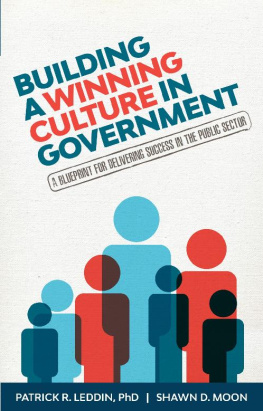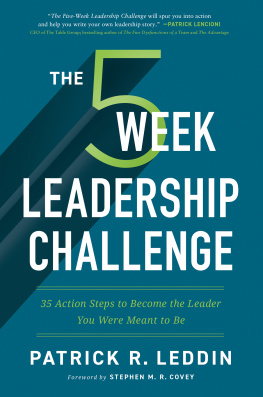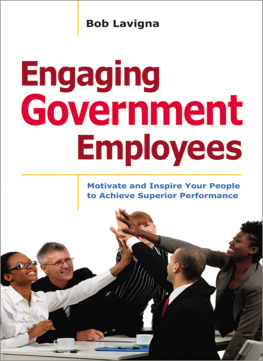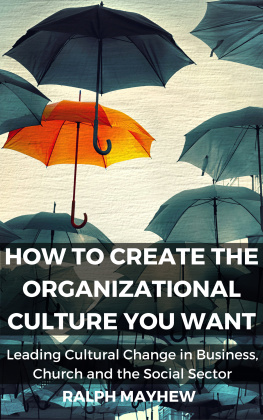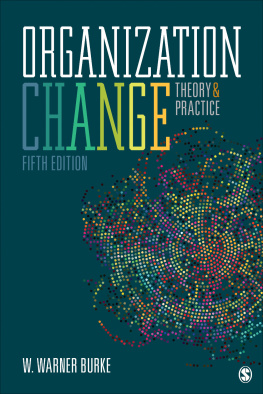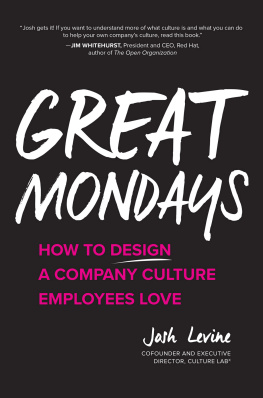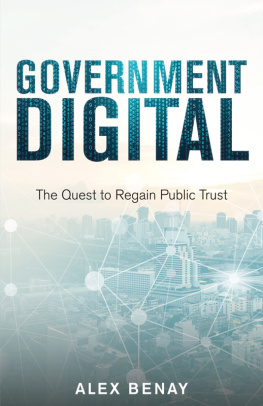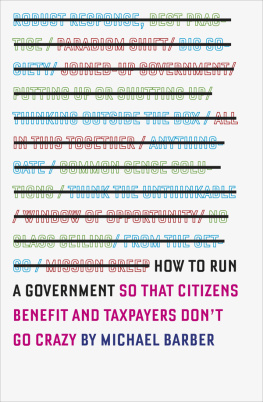Building
A Winning Culture In Government

P atrick R. Leddin, PhD
shawn d. moon
Copyright 2018 by FranklinCovey Co.
This work may not be reproduced for use in a group setting or for use by organizations as part of a training program. Such use may be granted by FranklinCovey in a written license and upon payment of applicable license fees; for information on become a licensed facilitator or trainer, please call 1(801) 817-5261.
All terms such as company and product names appearing in this work may be trademarks or registered trademarks of their respective owners.
All persons, companies, and organizations listed in examples and case studies herein are purely fictitious for teaching purposes unless the example expressly states otherwise.
All rights reserved, including the right to reproduce this book or portions thereof in any form whatsoever. For information, address FranklinCovey Legal Department, 2200 West Parkway Blvd., Salt Lake City, Utah 84119.
For information about special discounts for bulk purchases, please contact .
Building a Winning Culture in Government: A Blueprint for Delivering Success in the Public Sector
ISBN: (p) 978-1-63353-764-4
BISAC POL030000 POLITICAL SCIENCE / American Government / National
Printed in the United States of America
Table of Contents
The Paradigm: Leadership Is a Choice,
Not Just a Position
Habit 1Be Proactive: Take Initiative and Responsibility
for Results
Habit 2Begin With the End in Mind: Gain a Clear Sense
of Mission
Habit 3Put First Things First: Focus on Getting the Right
Things Done
Habit 4Think Win-Win: Provide Mutual Benefit by
Respectfully Seeking to Benefit Others as Well as Yourself
Habit 5Seek First to Understand, Then to Be Understood:
Empathize in Order to Understand People and Their Perspectives
Habit 6Synergize: Leverage the Gifts and Resources of
Other People
Conclusion: The Job for You
to Do Now Starts Today
Peter Drucker famously said, Culture eats strategy for breakfast. In doing so, he identified a phenomenon that leaders have struggled with throughout history: It is one thing to have a great strategy, but its quite another to accomplish it . Never has this statement been more trueor more challengingthan for todays government organizations.
Whether operating at the federal, state, or local level, government organizations face increased media scrutiny, reduced funding, and the many challenges of moving large, multi-layered, and highly regulated organizations. Its no surprise that many government organizations report that their employees are less engaged than ever and that leaders feel helpless to change the situation.
In many cases, employees and leaders are caught in a vicious cycle. Performance declines, scrutiny increases, and employee paralysis ensues. Repeat.
How do you break this cycle?
You change the mindset from leaders are a select few in the organization to everyone can and should be a leader. This simple, yet significant shift is key to creating an effective government organization in the twenty-first century. If every member of the organization is leading from where they are, it also allows government organizations to leverage the power of five highly effective practices:
- Find the voice of the organization and connect and align accordingly (a.k.a. lead with purpose).
- Execute your strategy with excellence.
- Unleash and engage people to do infinitely more than they imagined they could.
- Be the most trusted organization possible.
- Create fervent loyalty with all stakeholders.
For years, FranklinCovey has helped government organizations employ these practices, develop leaders at every level, create results, and ignite their ultimate mission essentiala winning culture. We have worked with thousands of teams and hundreds of organizations at every level of government. Now we want to help you drive mission success by creating a winning culture of your own.
In this book we discuss the challenge and opportunity associated with building a powerful, winning culture within government and frame the paradigm of leadership at all levels. We review in some depth the five practices you need to create this culture.
Leaders are a significant leverage point for any team or organization. What the leaders say and how they behave represent an organizations single largest opportunity for affecting change. Perhaps you are a leader with responsibility for a team, agency, or division, or perhaps you dont have any formal direct reports. Either way, you can be a force for change, for creating engagement, andultimatelyfor getting the most important things done.
The great cultural anthropologist Margaret Mead once said, Never doubt that a small group of thoughtful, committed citizens can change the world; indeed, its the only thing that ever has.
Our goal with this book is not to help you change the world. It is to help you create lasting change within your own circles of influence with the knowledge that your influence can grow over time to become truly significant. Our goal with this book is to help you change your world. We invite you to begin the journey.
The challenge of operating in a constantly changing system
All organizations are perfectly designed to get the results they get.
Arthur W. Jones
As keynote speaker, Patrick was biding his time until his turn at the podium and watching the current presenter. The organizations executive director was about ten minutes into her remarks, and the audience was engaged. Not a passive shes the boss so we have to listen type of engagement; they were genuinely enthralled by her presentation.
Her message aligned around a single theme: the organization needed to better meet the evolving needs of its customers. Although the organization had a stellar track record and an untarnished reputation, the leaders in the room needed to deliver higher-quality services on time, every time, and at the lowest cost possible. Theirs was a competitive environment, and if they didnt raise their performance, someone else would subvert their efforts.
In our work with clients, weve heard many similar presentations in many other conference rooms. The leader was dynamic, the argument was sound, and the strategy was clear. However, this wasnt a multinational corporation or a mid-size enterprise trying to reach the next level. The leader who mesmerized her audience was in charge of a government agency.
Her insights were spot-on. She understood that they were living in a world of diminishing resources, increasing scrutiny, and uncompromising demands. She had figured out that the organization was operating in an increasingly pressurized environment, and she was passionately conveying that message so that all in attendance would see and ultimately respond to the emerging environment by thinking and acting more effectively.
The executive director explained that if they did not continue to improve, they would fall prey to a growing number of threats both within the larger government structure (internal) and outside of the government (external). From an internal perspective, other government organizations were competing with them for funding, technology, facilities, and personnel. Although these internal competitors had existed to varying degrees for years, the acceleration level was tremendous. In fact, these competitors were not competing simply for an extra employee or some additional funding; they were trying to take over her organizations very mission. The other organizations were trying to consume them.
Simultaneously, the external environment was riddled with pitfalls. Contractors were absorbing roles that had once been considered inherently government and off-limits to outsourcing. A wide range of stakeholdersincluding legislators, businesses, and everyday citizenswere actively questioning and intervening in daily operations. Fueled by a 24/7 news cycle, a staggering number of cable channels, and the ubiquitous nature of the Internet, these stakeholders insisted every mistake signaled an epidemic and required sweeping changes, and that shared mission signified redundancy that needed to be wiped out. Add to these realities increased security as a result of terrorism, a less than desirable job market, and a recovering economy. The organization had never faced an environment like this before. The executive director wanted each of her 300 managers to understand that in todays world, poor customer service in one part of the organization or a scandal in another could threaten the job of everyone in the room.
Next page
